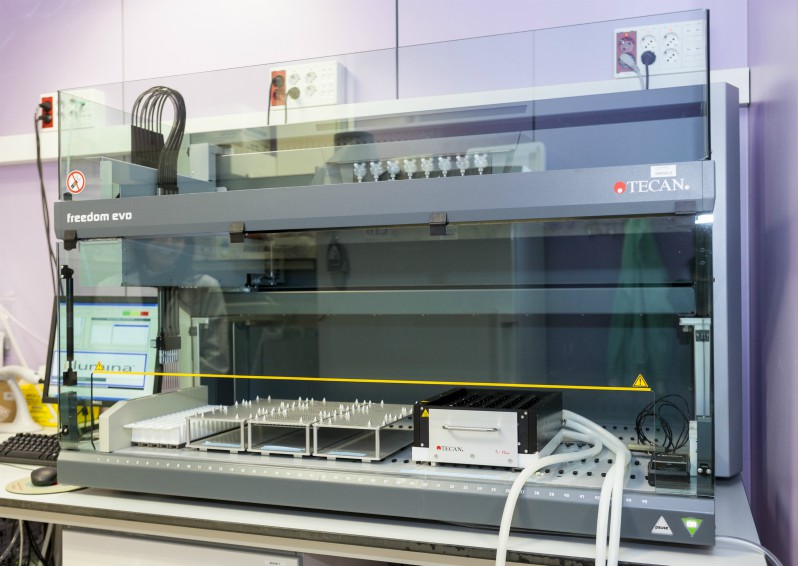High Content Genomics and Bioinformatics
The unit offers its services directly (in coordination with the IGTP Translational Genomics Unit) or through external providers.
We provide comprehensive support from experimental design through to interpretation of results and offer additional help for outsourcing and contracting external services. We have expertise in many global genome, transcriptome and epigenome analysis methodologies which allow the discovery of novel molecular markers applicable to many diseases.
Services currently provided include: consultation, sample quality control, sample processing for next generation sequencing (Illumina, Ion Torrent) and microarray based assays (Illumina Infinium), liquid handling automation for sample preparation and high throughput PCR assay setup, and bioinformatic data analysis.
Applications
qPCR (automated high throughput assays)
- Gene expression (mRNA, ncRNA, miRNA)
- SNP genotyping
- NGS library quantification
Microarrays:
- DNA variant detection (SNP, CNV)
- DNA methylation
- Gene expression (mRNA, ncRNA, miRNA)
Massively parallel sequencing:
- Genomes (WGS)
- Exomes
- Specific panels (subexomes, hotspot, liquid biopsy)
- Metagenomes (16S rRNA, shotgun)
- Transcriptomes (mRNA-seq, total RNA-seq, small RNA-seq)
- ChIP-seq
Attention to specific needs
- Special samples (low input, partially degraded, FFPE, biofluids)
- Assay customization
- Assay automation
- Data analysis setup for new applications
Bioinformatics Support
- Experimental design
- Sample size estimations
- Raw data quality control (overall assessment, outlier and batch effect detection)
- Data preparation (reformatting, reannotation, metadata curation)
- qPCR data analysis (efficiency correction, normalizer selection, relative quantification)
- Microarray data pre-processing (background correction, normalization)
- NGS data pre-processing (demultiplexing, adapter and base quality trimming)
- NGS data mapping to reference genome (duplicate removal, coverage analysis, read counting by biotype, gene, region, promoter, enhancer, chromosome segment)
- NGS de novo assembly (whole genome, transcriptome)
- Sequence variant calling and annotation (SNV/indels in genomes, exomes, panels, transcriptomes)
- Chromosomal location analysis (structural variations, LOH, chromatin peak, gene fusions, chromatin interactions)
- Differential statistical analysis (expression, methylation, copy number)
- Functional genomic analysis (GO, pathway, TF or miRNA binding, resistance, pathogenicity)
- Classification and predictor building
- Survival analysis
- Viral insertion analysis
- RNA soform analysis (splicing, editing, isomiR)
- Genetic variation analysis (Genome wide association analysis, microbial typing, viral quasipecies typing, epidemic outbreak phylogeny)
- Metagenomic analysis (taxa distribution, metabolic function enrichment)
- Genomic data visualization (genome browser tracks, graphics)
- Assistance for publication and data submission to repositories
- Assistance for accessing protected datasets




